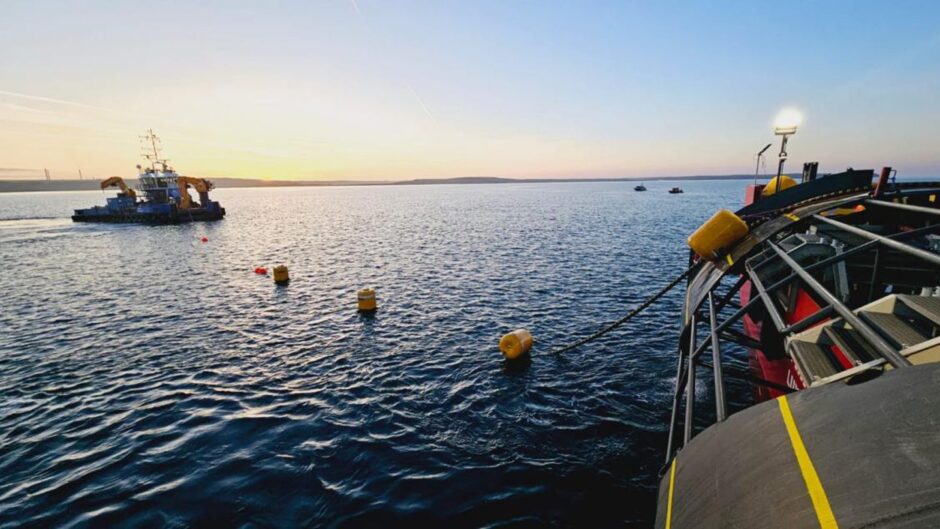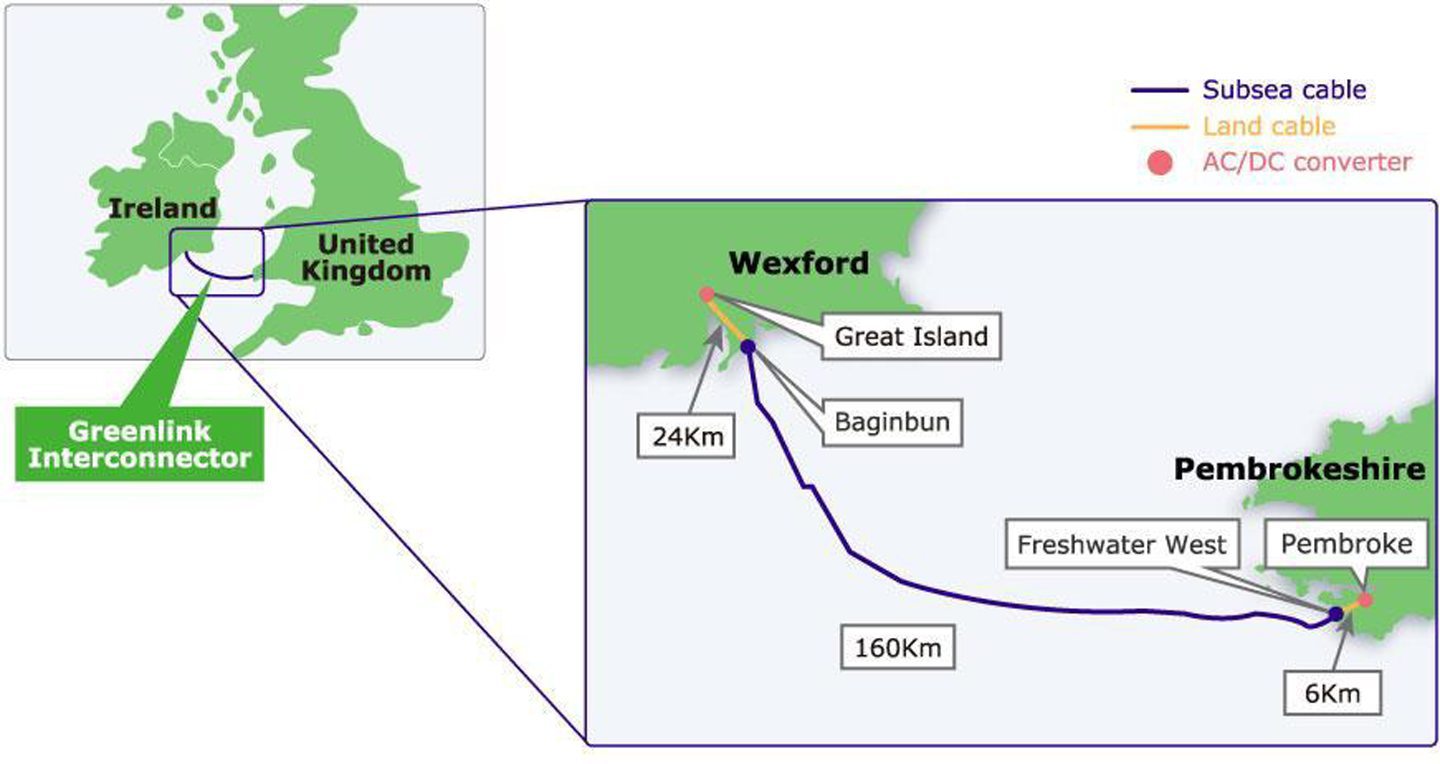 © Supplied by Sumitomo Electric
© Supplied by Sumitomo Electric Japanese firm Sumitomo Electric has announced the completion of the Greenlink Interconnector cable project between the UK and Ireland.
The 38 mile subsea high voltage direct current (HVDC) cable runs from Pembrokeshire in Wales to Great Island in County Wexford, Ireland.
The project will allow electricity to flow between the two countries in either direction depending on supply and demand.
The completion of the Greenlink comes shortly after National Grid completed the record-breaking Viking Link connection between the UK and Denmark.
The projects are part of a growing list of interconnector cables set to connect the UK with countries across western Europe.
Sumitomo Electric Greenlink
Sumitom Electric said Greenlink consortium partner Siemens Energy will commence trial operations of the cable “in the coming months”.
Greenlink chief executive James O’Reilly said Sumitomo completed all onshore and offshore HVDC cable installation work ahead of schedule.
“We eagerly look forward to the successful testing and commissioning of the project later this year,” he said.
The Greenlink cable becomes the second HVDC interconnector linking the UK and the Republic of Ireland after the 500 MW East-West Connector, which was completed in 2012.
A separate 500 MW cable, the Moyle Interconnector, runs from South Ayrshire in Scotland to Ballycronan More in Northern Ireland.
Other recently completed projects include the 1 GW NEMO Link interconnector between the UK and Belgium in 2019, and the 1.4 GW North Sea link between the UK and Norway in 2021.
Projects still in the works include the Xlinks UK-Morocco Power Project and the Lion Link between the UK and the Netherlands.
The UK is also progressing several domestic subsea cable connections, including the recently approved Eastern Green Link 2 from Peterhead to Yorkshire, and the Shetland HVDC link.
Interconnectors will play a key role in the future UK electricity system as more renewable energy projects come online.
The subsea cables will allow for cross-border movement of surplus electricity generated from UK wind and solar projects on windy and sunny days.
When weather conditions are less ideal and wind and solar generation is lower, the UK will be able to draw electricity from other sources, like Norwegian hydropower plants.

